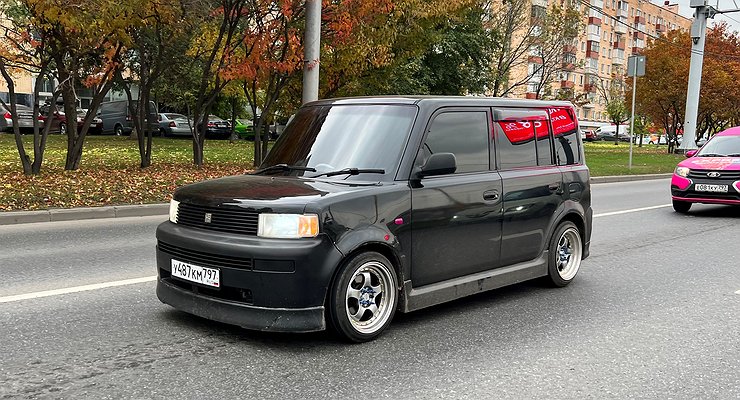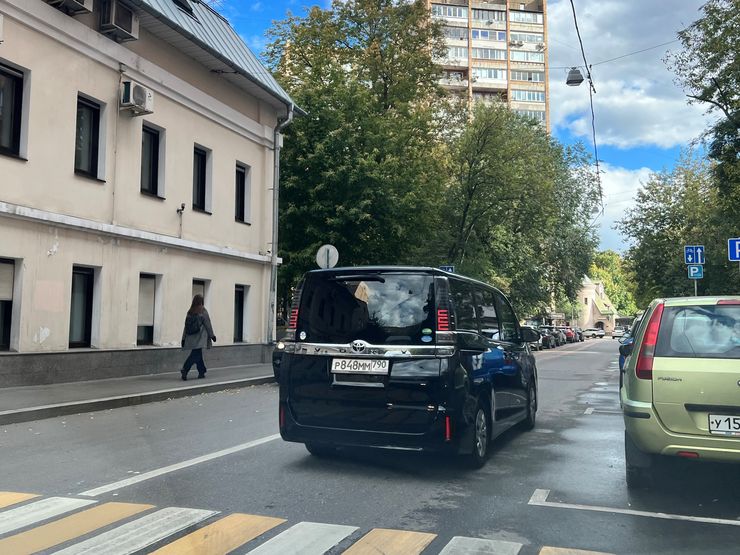Why Russians rushed to buy real Japanese cars
- October 31, 2022
- 0
The port of Vladivostok, packed and a large number of right-hand drive cars in the capital – this has not happened since the early 1990s, when the automotive
The port of Vladivostok, packed and a large number of right-hand drive cars in the capital – this has not happened since the early 1990s, when the automotive

The delivery time for a car to Russia is a maximum of three months, logistics throughout the country is a minimum of 30 days, but often much longer. This is exactly what the prospect of buying “right-handers” from auctions looks like now, but for some reason the number of people who want to buy them isn’t decreasing, it’s only growing. Even those who used to “turn their noses” and laugh at the steering wheel “in the glove compartment” now turn their eyes to the east. Why have motorized citizens changed their mind?
The first acquaintance of Russians with the natural Japanese car industry, so made in Japan, took place in the late 80s – early 90s, when “mark-like” and other “Kruzaks” in the Far East and later in other regions began to to appear . In addition to them, our native “Zhiguli” and “Volga” looked not only poor: crafts of domestic factories could hardly be called cars in the full sense of the word. As fashionable as the “Eight” was, it faded next to even the simplest and most poorly equipped Toyota Vista. What can we say about Cresta, Mark and Chaser.
Over the years, the domestic buyer “eat” many different foreign cars, became picky and demanding, completely fell in love with the “right-hand drive”, leaving him at the mercy of the regions of the Far East. Yes, and there, more and more often, the ubiquitous “Koreans” and the native, miraculously grown AVTOVAZ began to flicker. But here it happened.
First, since February, they’ve only been selling “Chinese” and “everyone’s” warehouse scraps. They are few, but they are wiped out, despite the ‘phone numbers’ on the price tags: a shortage with all the consequences that entails. Secondly, the usual loans have become expensive and less accessible – they do not give anyone, someone does not take it themselves. And thirdly, there are no stronger arguments like “guarantee”, “service” and other “residual prices”. No one can promise us ‘tomorrow’ – now we live one day.
And new conditions are always new rules of the game. It’s hardly possible to beg for a worn out car that needs an extensive repair to “live longer”. Like it or not, you have to change it. We habitually go to a car dealership and there LADA Granta for 1 million rubles, Largus for 1.8 million and Vesta for 2.3 million. It’s sobering I must say. We open the bulletin board – “wow, wow”: freshly imported “Japanese” are cheaper than domestic “beusheks”. How is that even possible?
The focus is not only on the mystical and inexplicable enhancement of the native “wood”, which has increased by a quarter to the “green” under the powder smoke. 25% “down”, and towing and “customs” became profitable again. The reversal of the stunning 2022 also falls into the global fall of the once unshakable Japanese yen: a crisis unprecedented since the 1990s rages in the Land of the Rising Sun, causing the national currency to fall by 22% against the dollar. . The yen has halved in price against the ruble. And since the Japanese cannot control the course, reliable, unpretentious, well-painted and stocked JDM cars poured into Russia in droves.
Why buy a KIA Rio, which you still have to look for, when you can get the freshest minibus for the same amount or a richer one – much more interesting than the Camry – Toyota sedan? A “besprobezhny” Mark costs 1.6 million rubles, and the same “Camry” after a taxi costs 2.5 million. Demand is fueled by statements from the Ministry of Finance, which would like to “drift” the ruble to 70 or even 75. per dollar.
A vein chirped at the temple, ‘We must take it now’, and the people take it. The Japanese make “things”, but the Russians turn out to have money, if the offer is really worthy. Another question is whether manufacturers will benefit from the situation. Nissan left our country after Renault, but there are still Mitsubishi, Suzuki, Mazda and Subaru left. Yes, and Toyota is only closing its St. Petersburg plant – there is no word yet on a final outcome. Well, we’ll soon find out what’s more important to them: image or money.


The delivery time for a car to Russia is a maximum of three months, logistics throughout the country is a minimum of 30 days, but often much longer. This is exactly what the prospect of buying “right-handers” from auctions looks like now, but for some reason the number of people who want to buy them isn’t decreasing, it’s only growing. Even those who used to “turn their noses” and laugh at the steering wheel “in the glove compartment” now turn their eyes to the east. Why have motorized citizens changed their mind?
The first acquaintance of Russians with the natural Japanese car industry, so made in Japan, took place in the late 80s – early 90s, when “mark-like” and other “Kruzaks” in the Far East and later in other regions began to to appear . In addition to them, our native “Zhiguli” and “Volga” looked not only poor: crafts of domestic factories could hardly be called cars in the full sense of the word. As fashionable as the “Eight” was, it faded next to even the simplest and most poorly equipped Toyota Vista. What can we say about Cresta, Mark and Chaser.
Over the years, the domestic buyer “eat” many different foreign cars, became picky and demanding, completely fell in love with the “right-hand drive”, leaving him at the mercy of the regions of the Far East. Yes, and there, more and more often, the ubiquitous “Koreans” and the native, miraculously grown AVTOVAZ began to flicker. But here it happened.
First, since February, they’ve only been selling “Chinese” and “everyone’s” warehouse scraps. They are few, but they are wiped out, despite the ‘phone numbers’ on the price tags: a shortage with all the consequences that entails. Secondly, the usual loans have become expensive and less accessible – they do not give anyone, someone does not take it themselves. And thirdly, there are no stronger arguments like “guarantee”, “service” and other “residual prices”. No one can promise us ‘tomorrow’ – now we live one day.
And new conditions are always new rules of the game. It’s hardly possible to beg for a worn out car that needs an extensive repair to “live longer”. Like it or not, you have to change it. We habitually go to a car dealership and there LADA Granta for 1 million rubles, Largus for 1.8 million and Vesta for 2.3 million. It’s sobering I must say. We open the bulletin board – “wow, wow”: freshly imported “Japanese” are cheaper than domestic “beusheks”. How is that even possible?
The focus is not only on the mystical and inexplicable enhancement of the native “wood”, which has increased by a quarter to the “green” under the powder smoke. 25% “down”, and towing and “customs” became profitable again. The reversal of the stunning 2022 also falls into the global fall of the once unshakable Japanese yen: a crisis unprecedented since the 1990s rages in the Land of the Rising Sun, causing the national currency to fall by 22% against the dollar. . The yen has halved in price against the ruble. And since the Japanese cannot control the course, reliable, unpretentious, well-painted and stocked JDM cars poured into Russia in droves.
Why buy a KIA Rio, which you still have to look for, when you can get the freshest minibus for the same amount or a richer one – much more interesting than the Camry – Toyota sedan? A “besprobezhny” Mark costs 1.6 million rubles, and the same “Camry” after a taxi costs 2.5 million. Demand is fueled by statements from the Ministry of Finance, which would like to “drift” the ruble to 70 or even 75. per dollar.
A vein chirped at the temple, ‘We must take it now’, and the people take it. The Japanese make “things”, but the Russians turn out to have money, if the offer is really worthy. Another question is whether manufacturers will benefit from the situation. Nissan left our country after Renault, but there are still Mitsubishi, Suzuki, Mazda and Subaru left. Yes, and Toyota is only closing its St. Petersburg plant – there is no word yet on a final outcome. Well, we’ll soon find out what’s more important to them: image or money.
Source: Avto Vzglyad
I’m Sandra Torres, a passionate journalist and content creator. My specialty lies in covering the latest gadgets, trends and tech news for Div Bracket. With over 5 years of experience as a professional writer, I have built up an impressive portfolio of published works that showcase my expertise in this field.